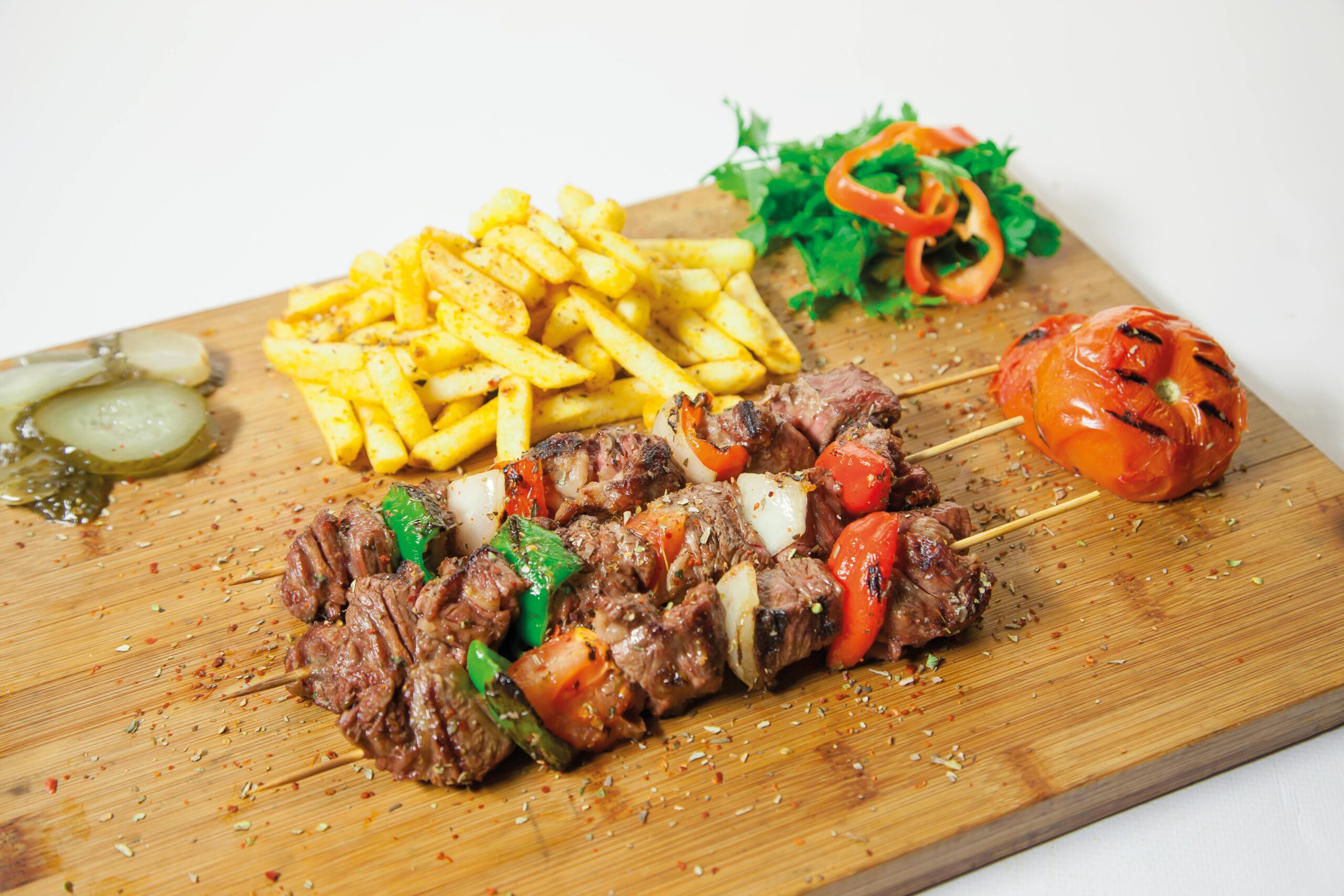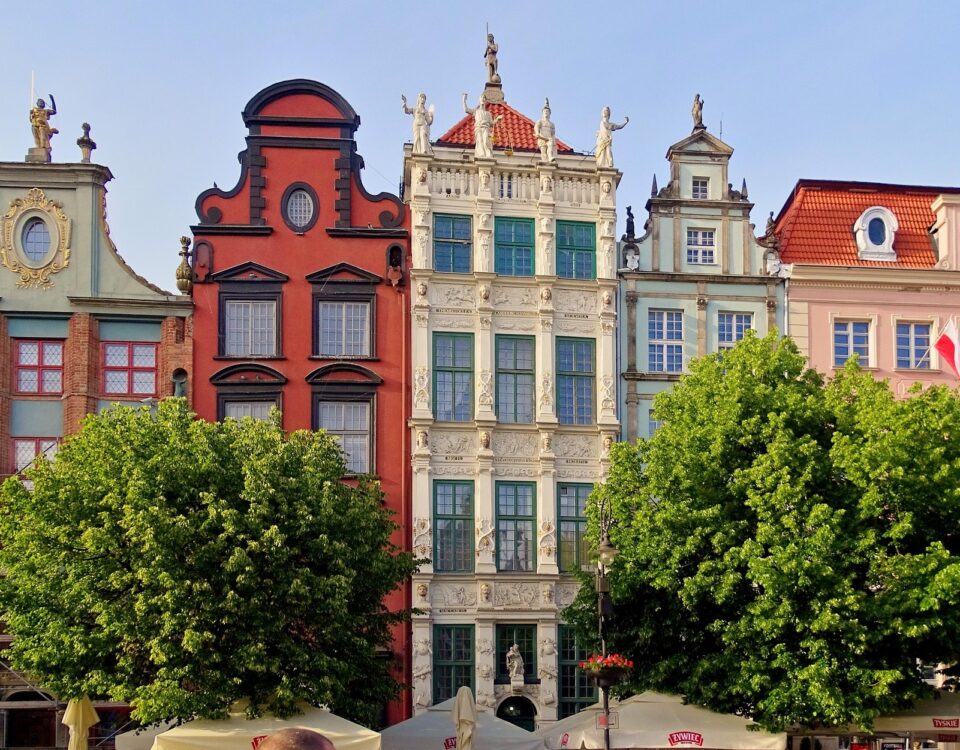
Eastern Europe for Expats and Digital Nomads: A Free Complete Guide in 2025
2025-09-10
Traditional Eastern European Street Food You Must Try in 2025 | TripToEast Guide
2025-10-14Eastern European Food Culture is one of the richest and most diverse in the world. Eastern Europe, as a culturally and historically significant region, boasts a wide range of foods influenced by history, geography, and tradition. This area, influenced by various historical, geographical, and cultural factors, offers a collection of unique dishes that provide a delightful and varied taste experience when traveling through its countries. In this article, we will explore some of the most important dishes of Eastern Europe and the special features of its culinary traditions.

In this TripToEast guide, we’ll take you on a flavorful journey through Eastern Europe’s rich culinary scene. From hearty stews and homemade breads to sweet pastries passed down through generations, you’ll discover why this region is a paradise for food lovers. We’ll highlight must-try dishes, uncover local dining traditions, and share insider tips on where to find the most authentic flavors. Whether you’re a curious traveler or a passionate foodie, TripToEast will help you taste the true spirit of Eastern Europe—one delicious bite at a time
Start exploring now 👉https://triptoeast.com/traditional-eastern-european-street-food/
1. General Characteristics of Eastern European Cuisine
Eastern European cuisine is known for its straightforward and practical approach to cooking, using ingredients that are easy to find and staple to the region. The dishes are generally filling and comforting, designed to provide warmth and energy during cold seasons. Traditional methods like slow-cooking, grilling, and frying bring out rich flavors while keeping the food wholesome. Both meat and vegetables are essential, often combined to create satisfying and balanced meals.
- Simple Ingredients: Eastern European cuisine typically uses readily available, simple ingredients such as potatoes, cabbage, pork, lamb, and grains.
- Cooking Methods: Common cooking techniques include grilling, frying, and slow-cooking in large pots or stoneware.
-
Vegetables and Meat
Vegetables and meats play a central role in the food, with most dishes featuring either or both as key components
2. Russian Cuisine: Deep and Authentic Flavors
- Borscht: A famous Russian beet-based soup, often served with sour cream and either beef or pork.
- Pelmeni: Russian dumplings filled with meat, vegetables, or cheese.
- Kefir: A fermented drink popular in Russia, consumed as a probiotic

3.polish cuisine:classic and Delicious Flavors
Pierogi: Dumplings that can be filled with a variety of ingredients such as potatoes, meat, or fruit.
Kielbasa: Polish sausage, typically served with sauerkraut or potatoes.
Zapiekanka: A street-food style baguette pizza topped with mushrooms, cheese, and various sauces
Start exploring now 👉https://triptoeast.com/top-10-vegetarian-dishes-in-eastern-europe/
4. Romanian Cuisine: A Fusion of East and West
- Sarmale: Cabbage leaves stuffed with meat and rice, cooked in tomato sauce and vegetables.
- Mămăligă: A traditional Romanian dish made from cornmeal, often served with cheese and sour cream.
- Romanian Kebabs: Grilled meat, typically served with bread and vegetables.

5. Bulgarian Cuisine: Sweet and Sour Flavors
- Shopska: A salad made with tomatoes, cucumbers, peppers, onions, and feta cheese, offering a refreshing and tangy taste.
- Kebapche: Bulgarian sausages that are grilled and served with bread and vegetables.
- Yufka: A type of traditional bread used alongside various dishes.
6. Hungarian Cuisine: Spicy and Full of Flavor
- Goulash: A thick and spicy stew made with meat, potatoes, and paprika.
- Paprikash: A chicken dish cooked with spicy paprika and sour cream.
- Chorba: Various types of soups made with meat and vegetables.
7. Historical Influences on Eastern European Cuisine
- Cultural Exchange: Eastern European countries have a complex history, often under the rule of different empires. This has significantly influenced the region’s cuisine.
- Ottoman Influence: Russian cuisine, for example, has been shaped by the influence of the Ottoman Empire and Asia, while Hungarian and Romanian dishes reflect the legacy of the Austro-Hungarian Empire.
- Traditional Cooking: Many cooking techniques and the use of local ingredients have been passed down through generations, preserving the region’s culinary heritage.
8.Key Points When Traveling Through Eastern Europe
- Street Food: Be sure to try local and street food, which are an inseparable part of the culture in many Eastern European countries.
- Local Dishes: Many of these dishes are served in traditional restaurants or street markets, where you can enjoy their authentic, home-style taste
- Tea and Hot Drinks: The culture of tea and hot beverages, such as Russian tea or Hungarian coffee, is also central to the region.
conclusion
Food in Eastern Europe is not just an essential part of daily life—it is a reflection of the region’s identity and culture. Given the region’s complex history and unique geography, its cuisines are diverse and rich. From the fresh and tangy flavors in Bulgaria to the spicy, aromatic dishes in Hungary, each country offers its own distinct culinary treasures. Traveling through these countries is not only a cultural and historical journey but also an unforgettable culinary experience
1.what are the most famous dishes in Eastern Europe?
Some of the most famous dishes from Eastern Europe include:
- Borscht (Russia/Ukraine): A beet-based soup often served with sour cream.
- Pierogi (Poland): Dumplings filled with various fillings like potatoes, cheese, or meat.
- Goulash (Hungary): A rich and hearty stew made with meat, vegetables, and paprika.
- Sarmale (Romania): Cabbage rolls stuffed with meat and rice, simmered in tomato sauce.
- Kielbasa (Poland): A traditional sausage, often grilled or served with sauerkraut.
- Shopska (Bulgaria): A fresh salad with tomatoes, cucumbers, peppers, and feta cheese.
2. What is the staple food in Eastern Europe?
The staple foods in Eastern Europe often include:
- Potatoes: Used in a variety of forms—boiled, mashed, or as a filling in dumplings.
- Cabbage: Found in many dishes like sauerkraut, stuffed cabbage rolls (sarmale), and soups.
- Bread: Often served with meals, especially traditional rye bread or sourdough.
Meat: Pork, beef, and lamb are commonly used, with sausages being especially popular
3. How spicy is Eastern European food?
Eastern European food is not particularly known for being extremely spicy. However, Hungarian cuisine stands out for its use of paprika, which gives many dishes a mild to medium spiciness. In countries like Poland and Romania, dishes tend to focus more on hearty and savory flavors rather than heat.
4. What are the best street foods in Eastern Europe?
- Zapiekanka (Poland): A baguette pizza-like snack topped with mushrooms, cheese, and other fillings.
- Kebapche (Bulgaria): Grilled sausages often served with bread and salad.
- Burek (Balkans): A flaky pastry filled with meat, cheese, or vegetables.
- Cevapi (Serbia/Bosnia): Grilled minced meat sausages, often served with flatbread and onions.
Paczki (Poland): A traditional Polish donut filled with jam, typically eaten on Fat Thursday
5. What are the best traditional beverages in Eastern Europe?
- Vodka (Russia/Poland): A strong distilled spirit, often consumed as a shot with meals.
- Kefir (Russia): A fermented dairy drink that’s slightly sour and probiotic.
- Slivovitz (Serbia): A plum brandy often served as a traditional drink at gatherings.
- Chai (Russia): Russian tea, often served strong and sweet, sometimes with jam or lemon.
Palinka (Hungary/Romania): A fruit brandy made from fermented fruits like plums, pears, or apples.
6. What is the role of fermented foods in Eastern European cuisine?
Fermented foods are very common in Eastern European cuisine, especially due to the cold climate where preservation was essential. Some examples include:
- Sauerkraut (fermented cabbage): Commonly served as a side dish or used in soups.
- Kefir: A fermented dairy drink with probiotic properties.
- Pickles: Fermented cucumbers are a popular snack or side dish, especially in Russia and Ukraine.
- Kvass (Russia): A fermented beverage made from rye bread, low in alcohol, and often served as a refreshing drink.
7. Is Eastern European food healthy?
- Eastern European cuisine can be both hearty and nutritious. Many dishes are rich in vegetables, whole grains, and lean meats. However, some dishes can be high in fats, especially with the use of butter and pork in certain countries. Eating in moderation and balancing with fresh vegetables is key to enjoying a healthy version of Eastern European food.
8. What are some vegetarian dishes in Eastern Europe?
While Eastern European cuisine is generally meat-heavy, there are several vegetarian-friendly options, such as:
- Pierogi (Poland): Dumplings filled with potatoes, cheese, or mushrooms.
- Mămăligă (Romania): A cornmeal dish often served with cheese and sour cream.
- Borscht (Ukraine): A beet soup that can be made without meat and is often served with sour cream.
- Shopska Salad (Bulgaria): A fresh salad made with tomatoes, cucumbers, peppers, and feta cheese.
Cabbage Rolls (Sarmale, Romania): Can be made with rice and vegetables instead of meat
9. How can I enjoy Eastern European food while traveling?
When traveling through Eastern Europe:
- Visit local markets: They often sell fresh ingredients and street food that gives you a true taste of the local flavors.
- Go to traditional restaurants: Many of them serve local dishes with authentic recipes passed down through generations.
- Take part in a food tour: This will allow you to sample a variety of dishes and learn more about the food culture from local guides.
Don’t miss family-run restaurants or home-cooked meals, as they offer the most authentic experience
10.What is the influence of history on Eastern European food?
Eastern European cuisine has been shaped by centuries of historical influences, including:
- Ottoman Empire: Brought spices, pastries, and new ingredients to regions like the Balkans and Hungary.
- Austro-Hungarian Empire: Left behind a legacy of pastries, sausages, and hearty stews.
- Soviet influence: Shaped the way food was prepared and consumed, especially in countries like Russia and Ukraine, with a focus on hearty, filling meals.
- Cultural Exchanges: Throughout history, Eastern Europe has seen an interchange of ingredients and cooking techniques from neighboring regions, creating a blend of flavors that define the region’s cuisine.




